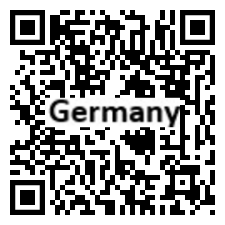Introduction
Background
As Europe's largest economy and second most populous nation (after Russia), Germany is a key member of the continent's economic, political, and defense organizations. Divided after World War II, the decline of the USSR and the end of the Cold War allowed for German reunification in 1990.
Geography
Area
total: 357,022 sq km
land: 348,672 sq km
water: 8,350 sq km
Climate
temperate and marine; cool, cloudy, wet winters and summers; occasional warm mountain (foehn) wind
Natural resources
coal, lignite, natural gas, iron ore, copper, nickel, uranium, potash, salt, construction materials, timber, arable land
People and Society
Population
84,220,184 (2023 est.)
Ethnic groups
German 86.3%, Turkish 1.8%, Polish 1%, Syrian 1%, Romanian 1%, other/stateless/unspecified 8.9% (2020 est.)
Languages
German (official); note - Danish, Frisian, Sorbian, and Romani are official minority languages; Low German, Danish, North Frisian, Sater Frisian, Lower Sorbian, Upper Sorbian, and Romani are recognized as regional languages under the European Charter for Regional or Minority Languages
Religions
Roman Catholic 26%, Protestant 23.7%, Muslim 3.6%, other 4.8%, none 41.9% (2021 est.)
Population growth rate
-0.12% (2023 est.)
Government
Government type
federal parliamentary republic
Capital
name: Berlin
Executive branch
chief of state: President Frank-Walter STEINMEIER (since 19 March 2017)
head of government: Chancellor Olaf SCHOLZ (since 8 December 2021)
Legislative branch
description: bicameral Parliament or Parlament consists of:
Federal Council or Bundesrat (69 seats statutory, 71 current; members appointed by each of the 16 state governments)
Federal Diet or Bundestag (736 seats statutory, 736 for the 2021-25 term - total seats can vary each electoral term; currently includes 4 seats for independent members; approximately one-half of members directly elected in multi-seat constituencies by proportional representation vote and approximately one-half directly elected in single-seat constituencies by simple majority vote; members' terms depend upon the states they represent)
Economy
Economic overview
leading EU service-based export-driven economy; highly skilled and educated labor force; fairly fiscally conservative; energy-related economic disruptions due to Russian gas cessations; increased defense spending and rising debts
Real GDP (purchasing power parity)
$4.424 trillion (2021 est.)
$4.311 trillion (2020 est.)
$4.477 trillion (2019 est.)
Real GDP per capita
$53,200 (2021 est.)
$51,800 (2020 est.)
$53,900 (2019 est.)
Agricultural products
milk, pork, wheat, beef, potatoes, barley, rapeseeds, chicken, eggs, sugar beets
Industries
automotive, mechanical engineering, chemicals, electrical and batteries, manufacturing, metals, finance and banking, telecommunications, healthcare, retail
Remittances
0.48% of GDP (2021 est.)
0.5% of GDP (2020 est.)
0.48% of GDP (2019 est.)
Exports
$2.004 trillion (2021 est.)
$1.676 trillion (2020 est.)
$1.816 trillion (2019 est.)
Exports - partners
United States 9%, China 8%, France 8%, Netherlands 6%, Italy 6% (2021)
Exports - commodities
cars and vehicle parts, packaged medicines, medical cultures and vaccines, aircraft, industrial machinery, medical instruments (2021)
Imports
$1.775 trillion (2021 est.)
$1.454 trillion (2020 est.)
$1.595 trillion (2019 est.)
Imports - partners
China 10%, Netherlands 10%, Poland 7%, Italy 6%, France 6% (2021)
Imports - commodities
cars and vehicle parts, medical cultures/vaccines, packaged medicines, crude petroleum, natural gas, computers (2021)
Exchange rates
euros (EUR) per US dollar -
Exchange rates:
0.845 (2021 est.)
0.876 (2020 est.)
0.893 (2019 est.)
0.847 (2018 est.)
0.885 (2017 est.)
Page last updated: Tuesday, December 19, 2023
